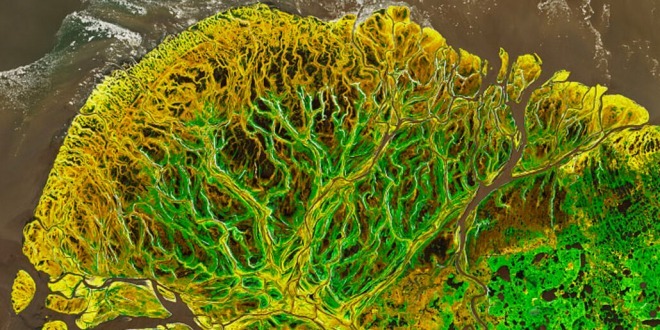The Yukon River’s westward trek takes it from its sources in British Columbia, Canada, all the way to Alaska. Generations of Indigenous people have hunted on its banks and fished in its waters, and the river has many stories to tell, including paddle-wheeled canoes, gold panning, and pipelines.
The river fans out into a complex delta where it joins the Bering Sea, like cauliflower lobes of river channels and ponds. The delta, too, has a tale to tell: that of an Arctic that is becoming increasingly green.
Willow shrublands line river channels as they snake toward the sea, according to a composite image of the delta’s northern lobe taken May 29 by the US Geological Survey’s Landsat 8 satellite. Tussock grasses coat the tundra further inland. Low-lying wetlands are populated by grass-like sedge meadows, interrupted by ponds left behind by springtime floods along riverbanks from melted snow and ice.
Since the 1980s, the Arctic in southern Alaska, such as the Kenai Peninsula, has become visibly greener as global temperatures rise (SN: 4/11/19). Researchers used satellite measurements of red and near-infrared light reflected off the foliage to notice the shift. Researchers report in Earth Interactions on June 1 that investigations of shifting vegetation in the Yukon Delta and adjoining Kuskokwim Delta suggest that more northern places are becoming greener as well.
One evidence of these changes in the delta is the increasing frequency of tall willows, a crucial moose habitat. Moose populations are also increasing. However, as the earth heats, many more changes are predicted to occur in the Yukon and other Arctic deltas, where greater flooding owing to climate change are projected to deposit thicker sediment piles, sustaining more greenery.

